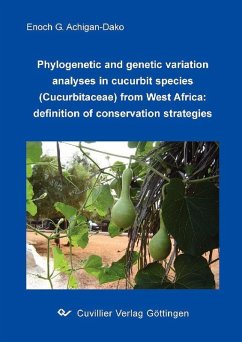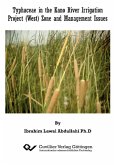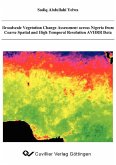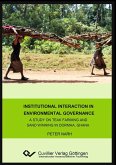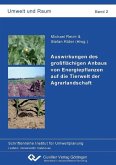The conservation of the genetic resources of crops and their wild relatives has become a
crucial task for mankind as soon as it has been realized that the gene pools of those
resources drastically erode. This problem is particularly exacerbated for the gourd family
Cucurbitaceae, a worldwide economically important plant group, which contains many
overlooked and barely known useful species. Different classification approaches in the family
resulted in controversies about phylogenetic relationships of species, genera, and tribes.
Moreover, knowledge of genetic patterns and ecological demands of species has been
scarce, particularly in West Africa. This dissertation aims at contributing to halt loss of
cucurbit resources by shedding light onto relationships among cucurbit species occurring in
the phytoregions of West Africa, and to investigate the structure of the genetic variation of
two particularly important species of this region, Lagenaria siceraria and Momordica
charantia.
I use phylogenetic, cytological and population genetic approaches to resolve longstanding
ambiguities regarding West African cucurbits. My results indicate that all species of
Benincaseae (mostly from Africa) fall within their traditional tribal group. However, the
subdivision of the tribe into subtribes Cucumerinae and Benincasinea is not supported, as
most species of Cucumerinae are dispersed throughout the Benincaseae. In addition
Cucumis melo subsp. melo (watermelon) shows pronounced differences to subsp. agrestis,
what is congruent with morphological data.
Detailed analyses on cytological and genetic variation in Lagenaria siceraria
(calabash) revealed a clear correlation of genome size with two different seed or fruit usage
types and with growing elevations in West Africa. The genome size differences in seed types
of L. siceraria might indicate differences in their evolutionary history. AFLP polymorphism in
the species was in general low, but principal co-ordinate analysis, Bayesian assignment
tests, and phylogenetic analyses revealed three significantly differentiated groups. In addition
to the already known subsp. siceraria and asiatica, a third taxon, described as subsp. egusi
was inferred based on these analyses.
Morphometric analyses clarified also the long-standing ambiguity for the identification
of Momordica charantia observed in Benin by clearly discriminating two groups characterized
by leaf shape differences: the common subsp. charantia and the newly described subsp.
macroloba, endemic to the Dahomey gap and the Sudano-Guinean phytoregion of Benin and
Togo. Phylogenetic analyses using AFLP indicated the existence of a paraphyletic
macroloba group, which clusters within subsp. charantia, and indicated some gene flow
between both types. Within subsp. charantia all populations collected in the dry Sudanian
zone were monophyletic. Although not formally described I refer to this group as sudanica
clade. Ecoclimatic niche modelling revealed different preferential distribution areas for the
three entities, and showed a good fit between potential and realised ecoclimatic niches.
Apart from the clear structuring of the species, our data show that genetic diversity within
peripheral and centre populations of M. charantia are similar. Adequate conservation
strategies could therefore be suggested for the promotion and the sustainable use of these
valuable resources.
Dieser Download kann aus rechtlichen Gründen nur mit Rechnungsadresse in A, B, BG, CY, CZ, D, DK, EW, E, FIN, F, GR, HR, H, IRL, I, LT, L, LR, M, NL, PL, P, R, S, SLO, SK ausgeliefert werden.

